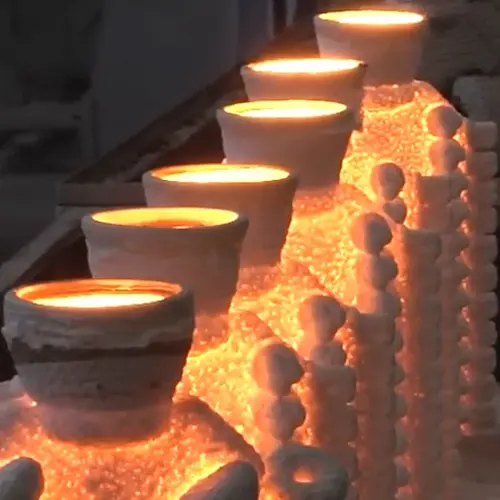Investment casting, also known as lost wax casting, is a manufacturing process with thousands of years of history and is still an advanced metal forming process in modern industry. Investment casting is known for producing complex and high-precision parts and can be widely used in various fields. The process first makes a wax mold, which is then covered with a ceramic shell. When the shell hardens, the wax is melted, leaving a hollow shell, and then molten metal is poured into the shell to form the final casting.
The following is a detailed introduction to the characteristics .
Advantages
1. High precision and smooth surface
Investment casting castings have extremely high dimensional accuracy and surface finish, with dimensional accuracy up to CT4-6 and surface roughness up to Ra3.2μm. This quality reduces the need for subsequent machining, reduces production costs, and improves the overall quality of the product.
2. Complex shape forming ability
Investment casting is particularly suitable for manufacturing parts with complex shapes that are difficult to process with other processes, and is an ideal choice for manufacturing parts with complex geometric shapes. Since there is no demolding problem, the ceramic shell can easily form a complex internal structure, which makes investment casting have significant advantages in manufacturing high-precision complex parts such as turbine engine blades.
3. Wide range of applicable materials
Investment casting is suitable for a variety of metals and alloy materials, including carbon steel, alloy steel, heat-resistant alloy, stainless steel, aluminum alloy, titanium alloy, etc. In particular, for some alloy materials that are difficult to process by forging, welding and cutting, investment casting provides a feasible molding solution.
4. Production flexibility
Investment casting has high production flexibility and can be used for both large-scale production and single-piece or small-batch production. This flexibility enables investment casting to meet production needs of different scales.
- Design flexibility
Investment casting can manufacture parts that are difficult or impossible to manufacture with traditional processing technology. This flexibility is very beneficial in industries such as medical and automotive manufacturing, which often require customized and complex designs.
Disadvantages of investment casting
- High initial cost
The process of making molds and patterns in casting requires a large upfront investment. Due to its cumbersome process flow and the high prices of the required refractory materials, mold materials and binders, the cost of castings is relatively high. Therefore, casting is more suitable for medium and large batches of products.
- Long delivery time
casting involves multiple steps and takes longer to produce than other casting methods. The time required for wax pattern making and model curing affects the overall delivery time, which may not be suitable for projects that require a quick turnaround.
- Size restrictions
casting has restrictions on the size of castings that can be produced. On the one hand, the dimensional accuracy of large castings is difficult to guarantee; on the other hand, the mold cost and processing cost will be relatively high. Therefore, when choosing investment casting, the size of the casting and cost-effectiveness need to be considered.
- Complex process
casting requires multiple processes, including wax pressing, wax repairing, tree assembly, slurry dipping, wax melting, casting molten metal and post-processing, etc. The entire process is relatively complicated. This increases the difficulty of production and the instability of quality control, requiring skilled technicians and professional equipment.
- Difficulty in quality control
The quality is affected by many factors, such as the shrinkage of the mold material, the deformation of the mold, the change of the line volume of the shell during heating and cooling, the shrinkage rate of the alloy, and the deformation of the casting during solidification. These factors make the quality control of casting difficult, and it is necessary to strictly control the process parameters and operation procedures of each process.
In summary, although casting has the advantages of high precision, high surface finish and the ability to produce complex-shaped castings, its disadvantages such as complex process, high production cost, unsuitability for the production of large castings and difficulty in quality control also limit its application range. Therefore, when choosing a casting method, it is necessary to make a comprehensive consideration based on the specific requirements of the casting and the production conditions.
Is investment casting suitable for your casting quality requirements?
casting has significant advantages in producing complex and precise parts, making it an indispensable process in all fields . However, its high initial cost, long delivery time and size restrictions may make it unsuitable for some applications. When choosing investment casting, factors such as product demand, production scale and cost-effectiveness need to be considered to ensure the best production plan.
Our experienced team is ready to assist you in evaluating your casting requirements and determining the casting solution that best suits your needs.





